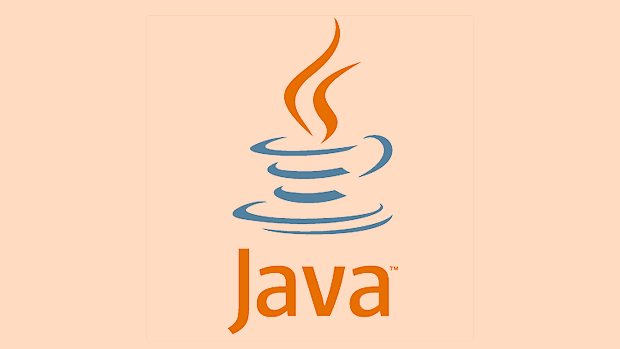Hexagonal Architecture for Maintainable Java Enterprise Applications
Jul 27, 2025 am 12:44 AMHexagonal Architecture is a software architecture model that improves system maintainability, testability and scalability by decoupling core business logic from external dependencies. 1. The core area includes business logic and use cases, which are implemented independently of the framework and technology; 2. Port defines interactive interfaces, divided into primary port (inbound) and secondary port (outbound); 3. Adapter implements ports, responsible for communicating with external systems, such as web controllers or database access components; 4. In Java, dependencies are isolated through interfaces, and the business layer does not introduce framework annotations, and only uses adapters through dependency injection; 5. In practice, excessive layering and direct calls between adapters should be avoided, and the core logic can be verified by unit tests. This architecture makes the system easy to replace technology, supports multiple access methods, and reduces testing costs. It is especially suitable for medium and large enterprise applications that require long-term evolution. It has been effectively implemented in the Spring Boot project through reasonable package structure and interface abstraction, and is a robust design method to improve the system's evolution capabilities.

Hexagonal Architecture, also known as Ports and Adapters, is a software architecture model designed to improve system maintainability and testability. In Java enterprise-level application development, with the increase in business logic complexity and the increase in external dependencies (such as databases, message queues, third-party services, etc.), traditional hierarchical architectures (such as three-layer architectures) are likely to lead to serious coupling, difficult testing, and difficult to replace technology implementation. Hexagonal Architecture provides a clearer way of decoupling, especially for enterprise systems that require long-term maintenance and frequent evolution.

What is Hexagonal Architecture?
The core idea of Hexagonal Architecture is to place the core business logic of the application at the center of the architecture, and external systems interact with it through "ports" and "adapters" . The entire architecture is like a hexagon, each edge represents an interactive channel with the outside world (such as web interfaces, databases, message middleware, etc.), and the application itself does not rely on these specific implementations.
- Core : includes business logic, domain model, use case, etc., which is completely independent of the framework, database or UI.
- Port : defines the interface for the system to interact with externally, divided into primary port (inbound, such as user request) and secondary port (outbound, such as calling database).
- Adapter : implements port interface and is responsible for communicating with external systems. For example:
- Inbound adapters: Spring MVC Controller, REST API adapters
- Outbound adapter: JPA Repository, Redis client, MQ sender
In this way, the core logic does not rely on specific technologies. Replacing the database or front-end framework only requires replacing the adapter without affecting the business code.

Why do Java enterprise applications require Hexagonal Architecture?
Java enterprise applications usually face the following challenges:
- Serious technical binding : After using Spring Data JPA, the Repository interface directly invades the business layer, resulting in the inability to leave the database test.
- Testing difficulty : Integration tests depend on databases, Redis, etc., and run slowly and unstable.
- Difficult to evolve : when migrating from a single unit to a microservice and replacing the persistence method, the modification cost is high.
The advantages of Hexagonal Architecture deal with these problems:

- Loose coupling : Business logic does not rely on frameworks such as Spring and Hibernate.
- Strong testability : It can perform pure unit testing of core logic without starting containers or connecting to databases.
- High substitutability : You can easily replace database implementations (such as changing from JPA to MyBatis) or exposure methods (such as changing from REST to gRPC).
- Clear division of responsibilities : Teams can develop different adapters in parallel without affecting the core logic.
How to implement Hexagonal architecture in Java?
Below is an example of a simplified order system showing the key structure.
1. Define core areas and use cases
// Domain model public class Order {
private String id;
private BigDecimal amount;
// Constructor, getter, setter omitted}
// Outbound port (second port) - external capabilities required by the business to call public interface OrderRepository {
Order save(Order order);
Optional<Order> findById(String id);
}
// Inbound port (main port) - How to trigger business logic from external public interface PlaceOrderUseCase {
String placeOrder(BigDecimal amount);
} // Core business logic @Service
public class PlaceOrderService implements PlaceOrderUseCase {
private final OrderRepository orderRepository;
public PlaceOrderService(OrderRepository orderRepository) {
this.orderRepository = orderRepository;
}
@Override
public String placeOrder(BigDecimal amount) {
if (amount.compareTo(BigDecimal.ZERO) <= 0) {
throw new IllegalArgumentException("Amount must be greater than 0");
}
Order order = new Order(UUID.randomUUID().toString(), amount);
orderRepository.save(order);
return order.getId();
}
}2. Implement outbound adapter (database)
// Outbound adapter @Repository for JPA
public class JpaOrderRepositoryAdapter implements OrderRepository {
private final SpringDataOrderRepository springDataRepo;
public JpaOrderRepositoryAdapter(SpringDataOrderRepository springDataRepo) {
this.springDataRepo = springDataRepo;
}
@Override
public Order save(Order order) {
return springDataRepo.save(order);
}
@Override
public Optional<Order> findById(String id) {
return springDataRepo.findById(id);
}
}3. Implement the inbound adapter (Web layer)
@RestController
@RequestMapping("/orders")
public class OrderController {
private final PlaceOrderUseCase placeOrderUseCase;
public OrderController(PlaceOrderUseCase placeOrderUseCase) {
this.placeOrderUseCase = placeOrderUseCase;
}
@PostMapping
public ResponseEntity<String> placeOrder(@RequestBody PlaceOrderRequest request) {
String orderId = placeOrderUseCase.placeOrder(request.getAmount());
return ResponseEntity.ok(orderId);
}
}4. Dependency Injection Configuration (Spring)
@Configuration
public class AdapterConfig {
@Bean
public OrderRepository orderRepository(JpaOrderRepositoryAdapter adapter) {
return adapter;
}
}Practical suggestions and common misunderstandings
- ? Avoid using framework annotations at the core layer : such as
@Autowired,@Entity,@Transactional. These should only appear in the adapter layer. - ?Clear name : Adapter class name embodies technologies, such as
JpaUserRepositoryAdapterandKafkaEventPublisherAdapter. - ?Test separation :
- Core business: Use pure JUnit Mockito to simulate ports.
- Adapter: Test the integration with external systems separately.
- ?Don’t over-layer for the sake of “hexagons” : if the project is simple, forcibly splitting will increase the complexity.
- ?Avoid direct calls between adapters : All interactions should be coordinated through core areas.
Summarize
Hexagonal Architecture makes Java enterprise applications more maintainable, testable and scalable by clearly dividing "core logic" and "external dependencies". It is particularly suitable for scenarios where medium and large systems, long-term evolution projects or multi-channel access is required (such as supporting both Web, CLI, and MQ triggers).
In Spring Boot projects, although hierarchical architecture is encouraged by default, the Hexagonal model can be fully implemented by reasonably organizing the package structure (such as partitioning bounded context by function, using application , domain , adapter and other package names).
Basically, as long as you achieve: business logic does not depend on the framework, and external dependencies are injected through the interface , a key step has been taken. The Hexagonal architecture is not a silver bullet, but it is an effective design method that allows the system to "live longer and change more stably".
The above is the detailed content of Hexagonal Architecture for Maintainable Java Enterprise Applications. For more information, please follow other related articles on the PHP Chinese website!

Hot AI Tools

Undress AI Tool
Undress images for free

Undresser.AI Undress
AI-powered app for creating realistic nude photos

AI Clothes Remover
Online AI tool for removing clothes from photos.

Clothoff.io
AI clothes remover

Video Face Swap
Swap faces in any video effortlessly with our completely free AI face swap tool!

Hot Article

Hot Tools

Notepad++7.3.1
Easy-to-use and free code editor

SublimeText3 Chinese version
Chinese version, very easy to use

Zend Studio 13.0.1
Powerful PHP integrated development environment

Dreamweaver CS6
Visual web development tools

SublimeText3 Mac version
God-level code editing software (SublimeText3)
 VSCode settings.json location
Aug 01, 2025 am 06:12 AM
VSCode settings.json location
Aug 01, 2025 am 06:12 AM
The settings.json file is located in the user-level or workspace-level path and is used to customize VSCode settings. 1. User-level path: Windows is C:\Users\\AppData\Roaming\Code\User\settings.json, macOS is /Users//Library/ApplicationSupport/Code/User/settings.json, Linux is /home//.config/Code/User/settings.json; 2. Workspace-level path: .vscode/settings in the project root directory
 How to handle transactions in Java with JDBC?
Aug 02, 2025 pm 12:29 PM
How to handle transactions in Java with JDBC?
Aug 02, 2025 pm 12:29 PM
To correctly handle JDBC transactions, you must first turn off the automatic commit mode, then perform multiple operations, and finally commit or rollback according to the results; 1. Call conn.setAutoCommit(false) to start the transaction; 2. Execute multiple SQL operations, such as INSERT and UPDATE; 3. Call conn.commit() if all operations are successful, and call conn.rollback() if an exception occurs to ensure data consistency; at the same time, try-with-resources should be used to manage resources, properly handle exceptions and close connections to avoid connection leakage; in addition, it is recommended to use connection pools and set save points to achieve partial rollback, and keep transactions as short as possible to improve performance.
 python itertools combinations example
Jul 31, 2025 am 09:53 AM
python itertools combinations example
Jul 31, 2025 am 09:53 AM
itertools.combinations is used to generate all non-repetitive combinations (order irrelevant) that selects a specified number of elements from the iterable object. Its usage includes: 1. Select 2 element combinations from the list, such as ('A','B'), ('A','C'), etc., to avoid repeated order; 2. Take 3 character combinations of strings, such as "abc" and "abd", which are suitable for subsequence generation; 3. Find the combinations where the sum of two numbers is equal to the target value, such as 1 5=6, simplify the double loop logic; the difference between combinations and arrangement lies in whether the order is important, combinations regard AB and BA as the same, while permutations are regarded as different;
 Mastering Dependency Injection in Java with Spring and Guice
Aug 01, 2025 am 05:53 AM
Mastering Dependency Injection in Java with Spring and Guice
Aug 01, 2025 am 05:53 AM
DependencyInjection(DI)isadesignpatternwhereobjectsreceivedependenciesexternally,promotingloosecouplingandeasiertestingthroughconstructor,setter,orfieldinjection.2.SpringFrameworkusesannotationslike@Component,@Service,and@AutowiredwithJava-basedconfi
 python pytest fixture example
Jul 31, 2025 am 09:35 AM
python pytest fixture example
Jul 31, 2025 am 09:35 AM
fixture is a function used to provide preset environment or data for tests. 1. Use the @pytest.fixture decorator to define fixture; 2. Inject fixture in parameter form in the test function; 3. Execute setup before yield, and then teardown; 4. Control scope through scope parameters, such as function, module, etc.; 5. Place the shared fixture in conftest.py to achieve cross-file sharing, thereby improving the maintainability and reusability of tests.
 Troubleshooting Common Java `OutOfMemoryError` Scenarios
Jul 31, 2025 am 09:07 AM
Troubleshooting Common Java `OutOfMemoryError` Scenarios
Jul 31, 2025 am 09:07 AM
java.lang.OutOfMemoryError: Javaheapspace indicates insufficient heap memory, and needs to check the processing of large objects, memory leaks and heap settings, and locate and optimize the code through the heap dump analysis tool; 2. Metaspace errors are common in dynamic class generation or hot deployment due to excessive class metadata, and MaxMetaspaceSize should be restricted and class loading should be optimized; 3. Unabletocreatenewnativethread due to exhausting system thread resources, it is necessary to check the number of threads, use thread pools, and adjust the stack size; 4. GCoverheadlimitexceeded means that GC is frequent but has less recycling, and GC logs should be analyzed and optimized.
 How to work with Calendar in Java?
Aug 02, 2025 am 02:38 AM
How to work with Calendar in Java?
Aug 02, 2025 am 02:38 AM
Use classes in the java.time package to replace the old Date and Calendar classes; 2. Get the current date and time through LocalDate, LocalDateTime and LocalTime; 3. Create a specific date and time using the of() method; 4. Use the plus/minus method to immutably increase and decrease the time; 5. Use ZonedDateTime and ZoneId to process the time zone; 6. Format and parse date strings through DateTimeFormatter; 7. Use Instant to be compatible with the old date types when necessary; date processing in modern Java should give priority to using java.timeAPI, which provides clear, immutable and linear
 Understanding the Java Virtual Machine (JVM) Internals
Aug 01, 2025 am 06:31 AM
Understanding the Java Virtual Machine (JVM) Internals
Aug 01, 2025 am 06:31 AM
TheJVMenablesJava’s"writeonce,runanywhere"capabilitybyexecutingbytecodethroughfourmaincomponents:1.TheClassLoaderSubsystemloads,links,andinitializes.classfilesusingbootstrap,extension,andapplicationclassloaders,ensuringsecureandlazyclassloa






